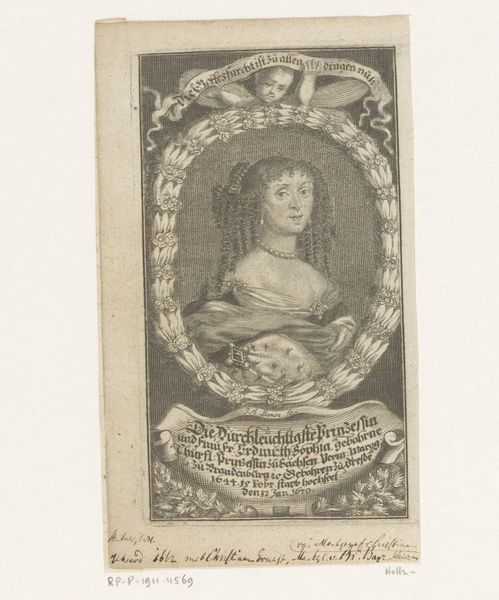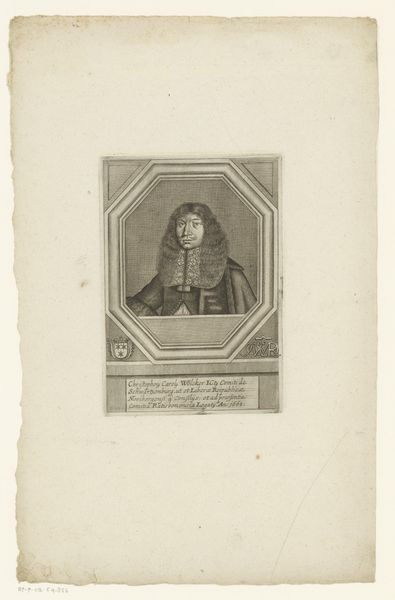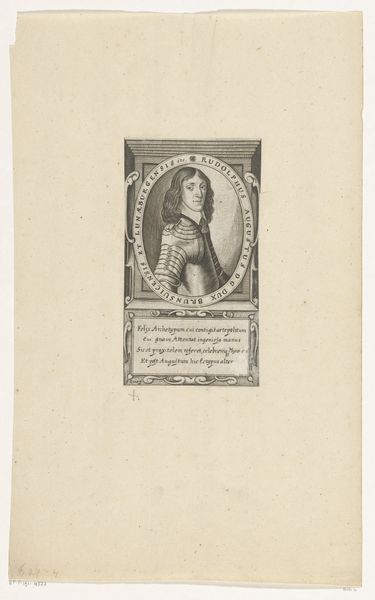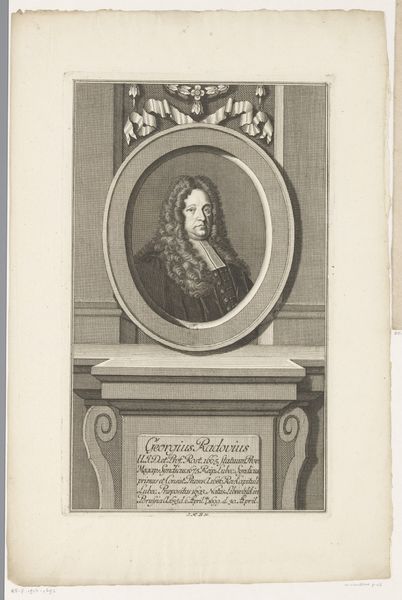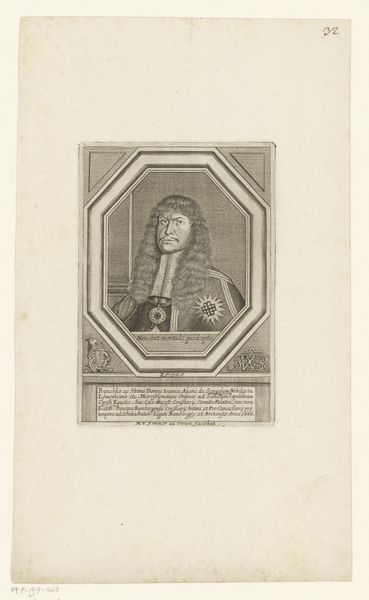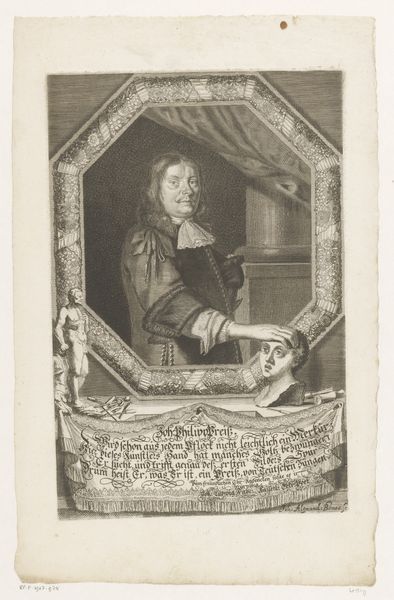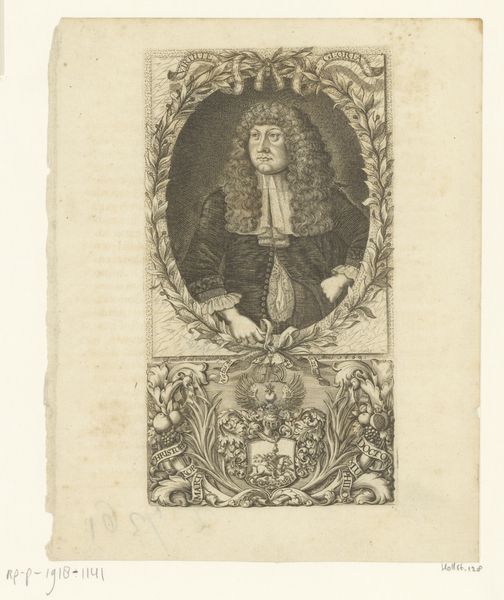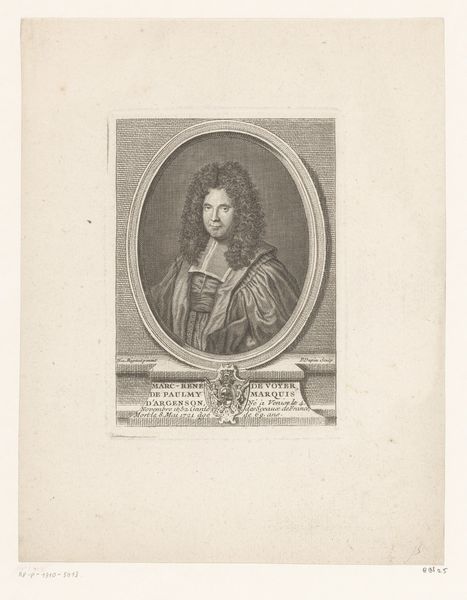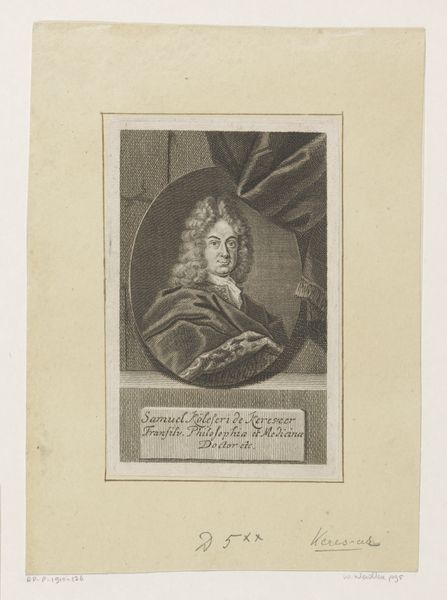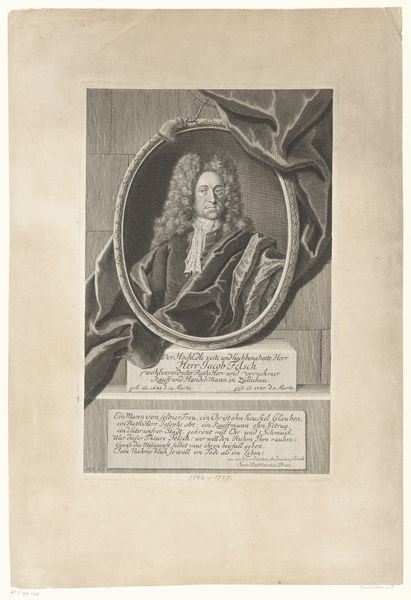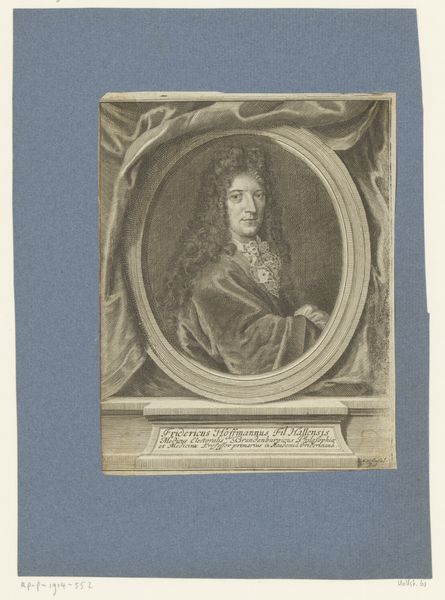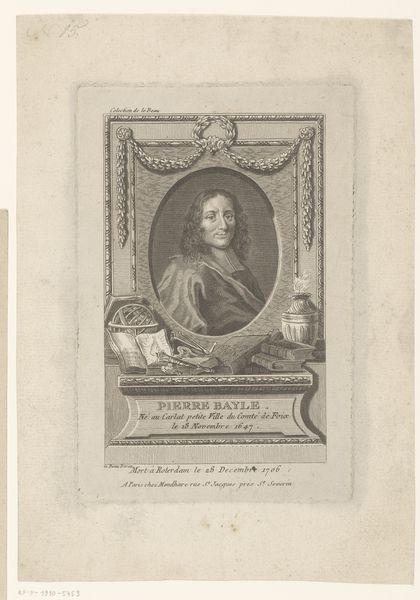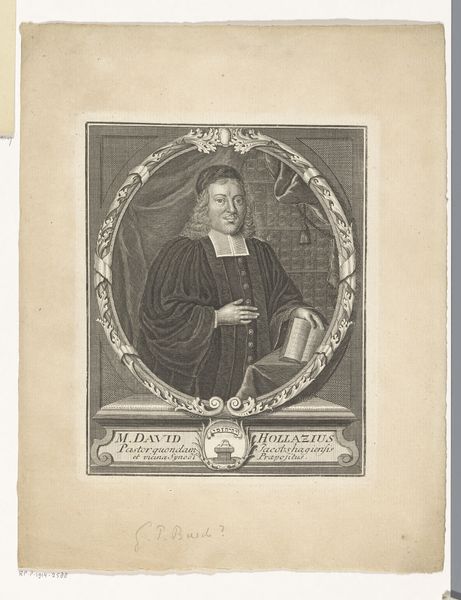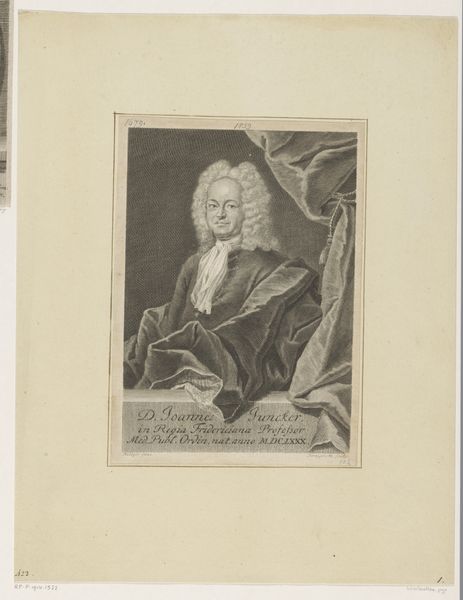
print, engraving
#
portrait
#
baroque
# print
#
history-painting
#
engraving
Dimensions: height 294 mm, width 178 mm
Copyright: Rijks Museum: Open Domain
Curator: This is a print from 1757 by Gottlieb Leberecht Crusius, a "Portret van Emanuel Lebrecht von Anhalt-Köthen," held at the Rijksmuseum. What strikes you about it? Editor: The framing within a frame is interesting. And I'm wondering about the emphasis on his status with the armor. It looks quite formal for a print, almost like a propaganda piece. How do you interpret the way Crusius chose to portray him? Curator: Precisely. Prints like these served a critical role in disseminating images of power. Think about it: before photography, this was how many people would ‘meet’ their leaders. The armour, the pose, the architectural setting – it’s all carefully constructed to project authority. The inscription reinforces his lineage and titles. How do you think this imagery functioned in the political landscape of the time? Editor: I guess it would solidify his position and broadcast it more widely than an oil painting could. Were prints like this typically commissioned by the subjects themselves? Curator: Often, yes. Or by institutions or groups wanting to align themselves with that power. So, it is definitely important to consider this piece in light of how power operated. It tells a particular narrative about his identity and right to rule, shaping public perception and bolstering political capital. Did you notice how this portrayal may relate to contemporary political issues or dynastic struggles? Editor: Now that you mention it, I do notice the careful placement of him with both landscape elements but also military signals...it is pretty purposeful in what he seems to be trying to show. Thank you! Curator: Yes, considering prints within the larger socio-political context truly deepens our appreciation. Seeing it not just as an image, but as a tool is illuminating.
Comments
No comments
Be the first to comment and join the conversation on the ultimate creative platform.
